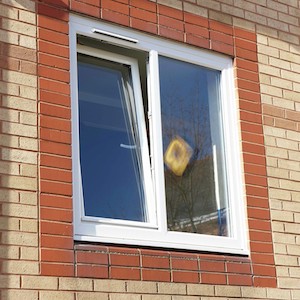The Ultimate Guide to uPVC Windows and Doors: Why They Are the Perfect Choice for Your Home
Over the last few years, uPVC windows and doors have actually skyrocketed in popularity among homeowners and industrial developers alike. Understood for their remarkable toughness, energy performance, and aesthetic appeal, uPVC (unplasticized polyvinyl chloride) has become a highly flexible and cost-efficient material. In this short article, we'll explore the benefits of uPVC doors and windows, their essential features, and why they are thought about a wise investment for modern home.
What is uPVC?
uPVC, or unplasticized polyvinyl chloride, is a type of rigid plastic material widely utilized in building and construction. Unlike routine PVC, the "unplasticized" form makes uPVC highly durable while preserving a lightweight structure. It is resistant to weathering, rust, and chemical direct exposure, making it ideal for windows and doors that are exposed to the aspects.
As doors with windows to standard wood and aluminum choices, uPVC needs very little maintenance and has a remarkably long life-span, which interest sustainability-conscious consumers.
Key Benefits of uPVC Windows and Doors
Energy Efficiency
Energy efficiency is one of the primary reasons house owners decide for uPVC doors and windows. The product has excellent insulation homes, which help manage indoor temperature levels by sealing out heat throughout summertimes and keeping heat in winters. Paired with double or triple glazing, uPVC can significantly decrease energy usage and add to decrease energy expenses.
Durability and Weather Resistance
uPVC is exceptionally durable and created to hold up against harsh weather conditions, such as heavy rain, snow, and UV direct exposure, without fading, cracking, or warping. This makes it a fantastic option for both urban and seaside homes, where materials are typically exposed to extreme environmental conditions.
Low Maintenance
Say goodbye to regular sanding, painting, and polishing! Unlike wood, uPVC does not require frequent upkeep. A basic wipe-down with soapy water is enough to keep uPVC doors and windows appearing like new for years.
Noise Insulation
For homes located in loud city environments or near hectic roads, uPVC provides outstanding soundproofing. The combination of uPVC frames with double glazing can assist considerably minimize outdoors sound, producing a quieter and more tranquil indoor environment.
Security Features
uPVC windows and doors are incredibly strong and feature multi-point locking systems, improving security and making them resistant to break-ins. This makes them a favored choice for house owners who prioritize security without compromising looks.
Aesthetic Versatility
Contrary to the mistaken belief that uPVC just is available in white, modern-day uPVC doors and windows are readily available in a variety of colors, finishes, and styles. Whether you choose a classic woodgrain surface or a streamlined contemporary look, uPVC can be customized to match your home's design.
Cost-Effectiveness
Compared to products like aluminum or natural wood, uPVC is far more affordable without jeopardizing on quality. Its durability and low maintenance requirements likewise suggest you conserve money in the long run.
Popular Types of uPVC Windows and Doors
Sash Windows: Hinged on the side, these windows open outward and supply exceptional ventilation and unobstructed views.
Sliding Windows and Doors: Ideal for areas with restricted room, these feature horizontal sliding panels that save area while making the most of functionality.
Bay Windows: Perfect for including a touch of elegance and increasing the quantity of natural light in your home.
Tilt-and-Turn Windows: These provide dual functionality, enabling you to open them either fully or tilt them for ventilation.
French Doors: Stylish and practical, French doors made from uPVC include charm while improving the sense of open area.
Bi-Folding Doors: A contemporary choice for connecting indoor and outside areas, these doors fold neatly to one side, producing a smooth shift.
uPVC vs Traditional Materials
When compared to standard products like wood or aluminum, uPVC uses unique benefits:
uPVC vs Wood: While wood has a timeless appeal, it is prone to warping, decomposing, and termite damage over time. Wood also requires regular maintenance and can be pricey. uPVC, on the other hand, is extremely long lasting, low-maintenance, and cost-effective.
uPVC vs Aluminum: Aluminum frames are strong and smooth however are not as energy-efficient as uPVC due to aluminum's conductivity. uPVC is a better insulator, especially in areas with extreme weather conditions.
Ecological Impact of uPVC
uPVC is 100% recyclable, making it a more sustainable choice compared to non-recyclable materials. Makers are increasingly adopting environment-friendly practices to reduce waste during production. Furthermore, the energy efficiency of uPVC windows and doors can help lower your home's carbon footprint.
Tips for Choosing uPVC Windows and Doors

Concentrate on Quality: Always go with well-known and trustworthy brand names to ensure you're purchasing top quality uPVC that lasts for decades.
Customization: Look for customization options to match your home's distinct style.
Glazing Options: Pair uPVC frames with double or triple glazing for the best thermal and acoustic insulation.
Guarantee: Check if the product features a detailed warranty for comfort.
Installation: Choose expert installers who have experience dealing with uPVC to guarantee a flawless surface.
Conclusion
uPVC doors and windows are not simply a financial investment in your home's looks-- they're an investment in sturdiness, functionality, and energy savings. As house owners continue to prioritize environmentally friendly and economical options, uPVC sticks out as one of the very best materials on the market. Whether you're remodeling your home or constructing a new one, uPVC windows and doors use a best mix of practicality, style, and value for money.
If you're looking to update your home's windows and doors, think about uPVC for an option that integrates performance, cost, and contemporary appeal.
